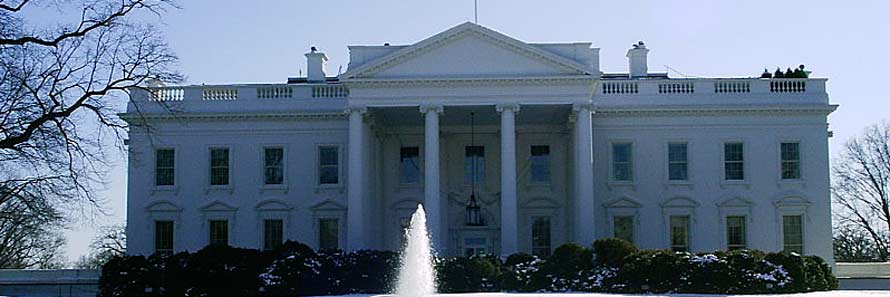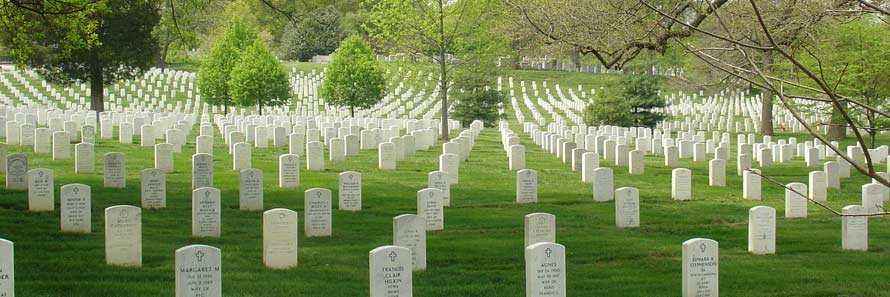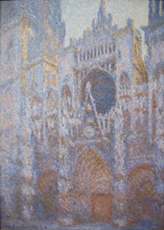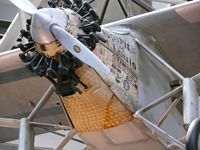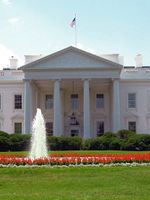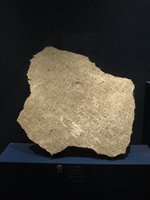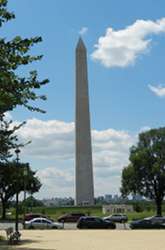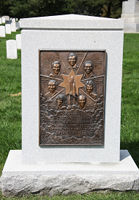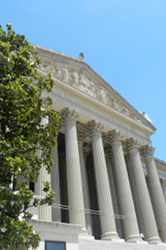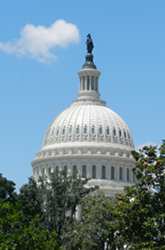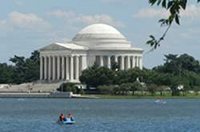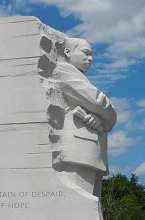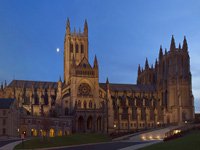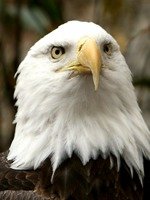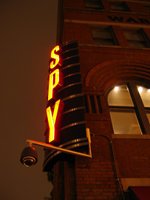Things to do in Washington, District of Columbia
Home to the most powerful politicians on earth, Washington has a relaxed vibe, great museums and galleries, and world-famous monuments and public spaces.
Most of the principal attractions are within walking distance of each other on or close to the National Mall. For those wanting to see power up-close and personal, you must go to Pennsylvania Avenue to see the White House (and probably some demonstrators), the Capitol, and the National Archive (an underrated attraction, where you can see the Constitution, Declaration of Independence and one of a handful of remaining copies of the Magna Carta).
For those who love museums, the National Mall is home to the National Gallery of Art (with a particularly impressive impressionist collection), the National Air and Space Museum, and the Museum of National History.
And then there are the monuments: Washington, Roosevelt, Martin Luther King and Jefferson, to name the most famous. Another must-see attraction is the Arlington National Cemetery, a short drive from Washington's city centre.
1. The National Gallery of Art
The National Gallery of Art, situated on Washington's National Mall, boasts one of the finest art collections in the world.
Housed in the neo-classical John Russell Pope designed West Building, the linked East Building, and a 6.1-acre sculpture garden, the Gallery contains paintings, sculpture, works on paper, photographs and decorative arts from the thirteenth century onwards.
The Gallery's most famous work is Leonardo da Vinci's Ginevra de' Benci, the only work by this artist found in the Americas. The Gallery's Italian Renaissance collection is particularly strong, including works by Botticelli, Bellini, Titian and Raphael.
So too are the Gallery's impressionist offerings. They include a van Gogh Self Portrait, Cezanne's The Gardener Vallier, Renoir's A Girl with Watering Can, and Monet's The Houses of Parliament: Sunset, Rouen Cathedral (pictured) and The Japanese Footbridge.
The Gallery's other highlights include a collection of British art by such names as Stubbs, Gainsborough, Constable and Turner, and a modern art collection with works by Pollock, Matisse and Picasso. Unlike other Washington museums, the Museum's 130+ galleries rarely feel crowded. Good food at sensible prices is served in the Cascade Cafe.
where? The National Gallery of Art is located on the National Mall, Washington, between 3rd and 7th Streets at Constitution Avenue NW.
when? Mon to Sat 10am to 5pm; Sun 11am to 6pm. Closed Dec 25 and Jan 1.
£$€¥ Free.
2. The National Air and Space Museum
The Smithsonian's National Air and Space Museum maintains the largest collection of air and spacecraft in the world.
IThe Museum's Washington facility, housed in the National Mall building, contains 22 galleries (including How Things Fly, World War II Aviation, Jet Aviation, Looking at Earth, The Space Race and Exploring the Planets), an IMAX theatre, the Albert Einstein Planetarium together with a large museum shop and a food court.
Its most famous exhibits include the original Wright 1903 Flyer (the first plane to achieve controlled, manned flight on 17 December 1903), the Spirit of St. Louis (which completed the first non-stop Atlantic flight on 21 May 1927, pictured), a British spitfire (the plane which won the allies the 1940 Battle of Britain), decommissioned cold war nuclear warheads, the Apollo 11 command module (the only part of the Apollo spacecraft to return to earth after Armstrong's 1969 moon landing), and a lunar rock sample that visitors can touch (collected during the Apollo 17 mission in 1972). One of the best things to do in Washington for kids.
where? The National Mall, Independence Ave at 6th St, SW Washington, DC. T 202-633-2214
when? 10am to 5.30pm, 7 days a week (not 25 Dec).
£$€¥ Free.
3. The White House
The White House is both the home of the President of the United States and a symbol of the President, his administration and the country.
The White House's cornerstone was laid in 1792, under the supervision of President George Washington. Construction was completed in 1800, with President John Adams being the House's first resident.
The 6-floor building, set in 18 acres of grounds, contains 132 rooms, 8 staircases, a tennis court, running track, swimming pool and bowling lane. The Oval Office, housed in the West Wing, is the President's principal office, and is decorated according to each President's taste. President Obama has opted to use the famous Resolute Desk, constructed from timbers of HMS Resolute, and presented to President Rutherford Hayes by Queen Victoria in 1880.
where? 1600 Pennsylvania Avenue NW, Washington, DC.
when? Tours of the White House can be arranged through (for citizens of the USA) their Congressman's office or (for citizens of other countries) their country's Washington embassy. Tours are held on Tuesday to Saturday, typically in the morning. Tours can be arranged up to six months in advance, and no later than 21 days before the tour date. Places are limited and distributed on a first come first served basis. Those unable to arrange a tour will have to inspect the White House from Pennsylvania Avenue.
£$€¥ Tours are free of charge.
4. Smithsonian National Museum of Natural History
Opened in 1910, the National Museum of Natural History (NMNH) is the most popular Smithsonian institution, attracting over 7 million visitors a year.
The NMNH holds over 500 million plant, animal, rock, mineral and fossil specimens, arranged into scores of permanent and temporary exhibitions.
The most popular include the Hall of Geology, Gems, and Minerals, which houses the 45-carat, deep blue Hope Diamond (whose former owners include Louix XIV of France and King George IV of England), the 330-carat Star of Asia Sapphire, the 23-carat Burmese Carmen Lúcia Ruby, and over 35,000 meteorites (one of which is pictured). The Dinosaur Hall has a number of fossils and cast skeletons, including a life-sized Tyrannosaurus facing off with a Triceratops. The Ocean Hall contains 684 specimens or replicas, including a 45-foot long North Atlantic Right Whale and a giant squid. The NMNH's temporary exhibitions include X-Ray Vision: Fish Inside Out and Titanoboa: Monster Snake. A great family attraction.
where? Intersection of 10th Street and Constitution Ave., NW in Washington, D.C. 20560. Metro: Smithsonian Station (Mall exit), on the Blue and Orange lines.
when? 10am to 5.30pm, 364 days a year (not Dec 25).
£$€¥ Free.
5. The Washington Monument
The Washington Monument, found on the National Mall, is a stone obelisk built to commemorate the first US President, General George Washington (1732-1799).
Washington led the Continental Army to victory against the British in 1783, presided over the drafting of the US Constitution in 1787 and, as President between 1789 and 1797, built a strong, well-financed and peaceful nation.
Construction of the Robert Mills designed Monument commenced in 1848 but was temporarily suspended between 1854 and 1877, when the obelisk had risen to 150 feet, because of a lack of funds and the intervention of the American Civil War. Different marble was used when building recommenced, resulting in a noticeable change to the colouration of the top two-thirds of the structure. The capstone was set on 6 December 1884, with the Monument dedicated and opened to the public the next year. The pinnacle of the obelisk stands at 555 feet, making the Monument the tallest building in DC and the tallest masonry structure in the world. The Monument has a width of 55 feet at its base, tapering to 34 feet at the top of its shaft, and weighs 82,422 tonnes. Visitors are no longer able to access the top of the Monument, owing to damage caused by the 2011 Virginia earthquake.
where? Constitution Avenue and 15th Street, Washington.
when? 9am to 5pm, daily (10pm between June and August).
£$€¥ Free.
6. Arlington Cemetery
As the Country's capital, Washington is home to a large number of monuments and memorials.
DChief amongst them is the Arlington National Cemetery, a 624 acre-site in which America's military casualties and veterans are interred. The cemetery is a beautiful and peaceful place for reflection. Visitors can also observe the changing of the guard at the Cemetery's Tomb of the Unknowns (which has been perpetually guarded by the 3rd US Infantry Regiment since 1937, pictured). Those interred at the Cemetery include President John F Kennedy, President William Taft and Supreme Court Justice Thurgood Marshall, alongside numerous senior ranking military officers.
where? Arlington Cemetery is found at the west end of the Memorial Bridge, Arlington, Virginia.
when? Arlington Cemetery is open 365 days a year, between 8 am and 7 pm (Apr to Sept) and 8am and 5pm (Oct to Mar).
£$€¥ Free.
7. The National Archive
Housed in the imposing John Russell Pope designed National Archives Building, the National Archive is home to the Declaration of Independence, the United States Constitution and the Bill of Rights, together with one of only four remaining copies of the British Magna Carta.
The building was opened in December 1952 by President Harry S Truman and displays the Archive's principal documents in a 70 foot high domed Rotunda; other notable design features are the Rotunda's 40 foot bronze doors and the 14 x 35 foot Faulkner Murals adorning its walls. The Magna Carta (1297) is one of the most important documents in the history of democracy; signed by King John of England, it established that no man—not even the King—is above the law. The Declaration of Independence (1776) announced the separation of the 13 colonies from Great Britain and the establishment of the United States; it enshrines the ideals of liberty, equality and the right to self-determination.
The Constitution (1787) codifies the values of the American Revolution into a practical scheme of government. And the Bill of Rights (1789) adds the first ten amendments to the Constitution, thereby protecting, amongst other things, freedom of speech, press, religion and assembly. Visitors can also view an 11-minute film introducing democracy in the William G McGowan theatre; encounter some fascinating public records in the Public Vaults, for instance telegrams sent by Abraham Lincoln to his generals; or grab a snack in the lower level Charters Cafe. One of Washington's most educational and inspirational attractions.
where? 700 Pennsylvania Avenue, NW, Washington DC.
when? 10 am to 5.30 pm, 7 days a week. Closed Thanksgiving and Dec 25.
£$€¥ Free.
8. The Capitol
The neoclassical Capitol Building, sat atop Capitol Hill to the east of the National Mall, is the meeting place of the US Congress.
Built between 1793 and 1811 and expanded considerably in the 1850s, the William Thornton designed building rises to 289 feet and contains 16.5 acres of floor space over five floors. Its most distinctive feature is the Thomas Walter designed dome; spanning 100 feet, the dome contains 4 million kilograms of ironwork, is crowned by the 6-metre high Thomas Crawford designed Statue of Freedom, and is surrounded by frescoes painted by Constantino Brumidi.
The Capitol’s two wings house the two chambers of Congress: the 100-member Senate (to the north) and the 448-member House of Representatives (to the south). The Capitol Building is surrounded by 289 acres of grounds, principally lawns and formal gardens. Visitors can access certain areas of the Capitol from the 54,000 metre Capitol Visitor Center, opened in 2008 at an estimated cost of over $620 million.
where? East Front plaza of the US Capitol at First Street and East Capitol Street, Washington DC.
when? 8.30 am to 4.30 pm Mon to Sat. Closed Thanksgiving, Christmas, New Year's and Inauguration Days.
£$€¥ Free.
9. Jefferson, Roosevelt and Martin Luther King Memorials
The Jefferson, Roosevelt and Martin Luther King Memorials are found on the shores of the Potomac River tidal basin, to the south of the Washington Monument and Lincoln Memorial.
The Martin Luther King Memorial, the only Washington Memorial dedicated to a non-president, is furthest north. It is a 28 foot high sculpture depicting civil rights leader King (1929 - 1968) emerging from the Stone of Hope. Created by master sculptor Lei Yixin, the Memorial symbolises King's unwavering advocacy for social justice, culminating in the passing of various civil rights acts in the 50s and 60s. King delivered his immortal 'I have a dream' speech from the nearby Lincoln Memorial in March 1963.
The Roosevelt Memorial, dedicated to 32nd President Franklin Delano Roosevelt, who held office between 1933 and 1945, is spread over 7.5 acres. It comprises four outdoor rooms, designed by Lawrence Halpern, depicting the different stages of FDR's terms in office.
The Jefferson Memorial, located directly south of the White House, is dedicated to Thomas Jefferson, a founding father and the third US president. Built between 1939 and 1943, the Memorial is a neoclassical building with circular marble steps, portico, circular colonnade and shallow dome designed by John Russell Pope. Bearing similarities to the Roman Pantheon, the Memorial houses a 19 foot Rudolph Evans statue of Jefferson.
where? These monuments are found on the shores of the Potomac River tidal basin, near the intersection of Independence Avenue, West Basin Drive and Ohio Drive, SW, Washington DC.
when? All year round.
£$€¥ Free.
10. The Washington National Cathedral
The Washington National Cathedral had its beginnings in 1893 when Congress granted a charter for its construction.
The foundation stone was laid 14 years later, with construction being completed in 1990 (and the 'final finial' placed in the presence of President George Bush). The Cathedral is the sixth largest church in the world, the fourth tallest structure in Washington, and the church used for national religious ceremonies. For instance, the funerals of Presidents Wilson, Eisenhower, Reagan and Ford were held here, as was a memorial service for the victims of the 9/11 attacks, and the Presidential prayer service held the day after President Obama's inauguration.
The Cathedral, which is of Gothic design characterized by the use of flying buttresses, pointed arches and ribbed vaulting, has a length of about two football pitches; its Gloria in Excelsis Tower rises to 91 metres, and at 206 metres above sea level is the highest point in Washington. Of particular note are the Cathedral's 231 stained glass windows, the most famous of which is probably the Space Window (honoring man's landing on the moon, and containing a piece of lunar rock at its centre).
where? Washington National Cathedral, 3101 Wisconsin Ave., N.W. Washington, D.C. 20016.
when? 10 am to 5.30 pm Mon to Fri; 10 am to 4.30 pm Sat; 8 am to 5 pm Sun.
£$€¥ Free.
11. The National Zoo
Founded in 1889, the 163-acre National Zoo (aka the Smithsonian National Zoological Park) is located 20 minutes from central Washington.
It is home to about 2,000 animals from over 400 different species. Its most famous inhabitants are giant pandas Mei Xiang and Tian Tian, on loan from the China Wildlife Conservation Association and the subjects of an ambitious breeding programme.
The Zoo's other inhabitants include African lions (and their seven cubs born in summer 2010), cheetahs, western lowland gorillas, gazelles, naked mole-rats, Asian elephants, fishing cats, red pandas, clouded leopards, a Japanese giant salamander, emus, kiwis, pelicans, herons, storks, flamingos, golden poison frogs, alligator snapping turtles, emerald tree boas, green anacondas and Burmese pythons. One of Washington's best family activities.
where? 3001 Connecticut Ave. NW, Rock Creek Park, Washington, D.C., USA. Metro: Red line to Red Line to the Woodley Park-Zoo/Adams Morgan or Cleveland Park stops.
when? Apr to Oct: 10 am to 6pm; Nov to Mar: 10 am to 4.30 pm. Closed Dec 25.
£$€¥ Free.
12. The International Spy Museum
Established in 2002, the International Spy Museum houses over 600 espionage artifacts over 2,000 square metres.
The Museum's exhibits include School for Spies (where visitors can learn about microdots, buttonhole cameras and invisible ink), War of the Spies (devoted to the Cold War), and Weapons of Mass Disruption (where visitors are shown how cyber attacks can cripple a country).
The Museum's unique selling point is the interactive nature of many of its exhibits. For example, when visitors arrive they are given five minutes to study a cover story and a mission; later on, they can test how well they remembered their story on interactive displays (or even when confronted by museum staff acting as police)! The Museum's Operation Spy—an hour-long real life spy adventure, where visitors are given safes to crack, messages to decode and suspects to interrogate—is well worth the additional $14 fee.
The Museum's newest exhibition, Exquisitely Evil, is devoted to 50 years of Bond villains. And don't miss the gadgets used in the rescue mission portrayed in the film Argo. A great attraction for children of 10 and over.
where? The Museum is located in the Pennsylvania Quarter neighborhood, Washington. It stretches the entire city block between 9th and 8th Streets at 800 F Street, NW (one block from the Gallery Place/China Town Metrorail Station and the Verizon Center).
when? Generally 10am to 6pm. Check website for details of extended opening.
£$€¥ Adults: $20. Seniors: $16. Children (7-17): $15. Under 7s: free.

